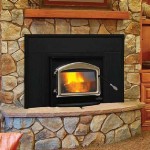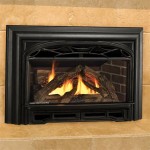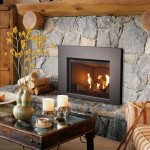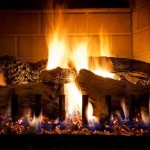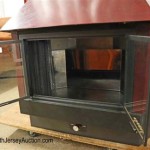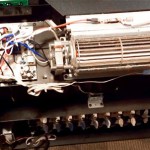Replacing a Fireplace Insert: A Comprehensive Guide
Replacing a fireplace insert is a significant undertaking that can dramatically improve the efficiency, aesthetics, and overall value of a home. This process involves careful planning, selection of a suitable replacement unit, and precise installation. Understanding the various aspects of this project is crucial for homeowners aiming to enhance their fireplace experience.
A fireplace insert is a self-contained heating appliance designed to fit into an existing masonry or prefabricated (zero-clearance) fireplace. It operates as a closed combustion system, offering significantly better heating efficiency compared to traditional open fireplaces. Over time, inserts can degrade due to usage and wear, leading to reduced performance and potential safety concerns. Replacing an older insert with a newer model can address these issues and provide numerous benefits.
The decision to replace a fireplace insert often stems from several factors. Decreased heating output, frequent repairs, visible damage, and a desire for a more modern and efficient heating solution are common motivators. Furthermore, advancements in fireplace insert technology have led to models with improved features such as thermostat control, programmable timers, and cleaner burning capabilities, making replacement an attractive option.
This article outlines the key steps involved in replacing a fireplace insert, from initial assessment and selection to installation and safety considerations. By understanding these processes, homeowners can approach this project with confidence and achieve optimal results.
Key Point 1: Assessing the Existing Fireplace and Determining Compatibility
Before embarking on the replacement process, a thorough assessment of the existing fireplace and its surrounding structure is essential. This assessment will determine the compatibility of the fireplace with potential replacement inserts and identify any necessary repairs or modifications.
The first step involves measuring the internal dimensions of the firebox, including the width, height, and depth. These measurements are critical for selecting an insert that will fit properly within the existing opening. Manufacturers typically provide detailed specifications for their inserts, including minimum and maximum firebox dimensions.
Next, the condition of the existing chimney and flue should be evaluated. A professional chimney sweep or inspector can perform a thorough inspection to identify any cracks, blockages, or other issues that could compromise the safe operation of the new insert. Depending on the type of insert being installed (wood, gas, or pellet), specific venting requirements must be met. In some cases, a new chimney liner may be required to ensure proper draft and prevent the buildup of harmful gases.
The type of fireplace construction, whether masonry or prefabricated, also influences the selection of a replacement insert. Masonry fireplaces are generally more versatile and can accommodate a wider range of insert models. Prefabricated fireplaces, on the other hand, may have specific limitations regarding the type and size of inserts that can be installed. Consulting the fireplace manufacturer's specifications or a qualified installer is crucial for ensuring compatibility.
Finally, consider the surrounding hearth and mantel. Check for any signs of damage, such as cracks or loose bricks. If necessary, make repairs or modifications to ensure that the hearth and mantel can safely withstand the heat generated by the new insert. Ensure that the hearth extension meets the minimum requirements specified by local building codes to protect combustible flooring.
Key Point 2: Selecting the Right Replacement Fireplace Insert
Choosing the appropriate replacement fireplace insert is paramount for achieving optimal heating performance, efficiency, and aesthetics. This decision should be based on factors such as heating needs, fuel type preference, budget, and desired features.
Fireplace inserts are available in three primary fuel types: wood, gas, and pellet. Each fuel type offers distinct advantages and disadvantages. Wood-burning inserts provide a traditional fireplace experience with the ambiance of a real wood fire. However, they require manual loading of wood, regular cleaning, and proper storage of firewood. Gas inserts offer convenience and ease of use, with options for natural gas or propane fuel. They typically feature thermostat control and remote operation. Pellet inserts utilize compressed wood pellets, providing a balance between the convenience of gas and the heating efficiency of wood. They require a hopper to store the pellets and an auger system to feed them into the firebox.
Heating capacity, measured in British Thermal Units (BTUs), is a crucial consideration. Determine the square footage of the area that the insert will be heating and select a model with sufficient BTU output to effectively warm the space. An undersized insert will struggle to maintain a comfortable temperature, while an oversized insert may lead to overheating.
Energy efficiency is another important factor to consider. Look for inserts with high efficiency ratings, as they will convert a greater percentage of fuel into usable heat. This can translate into lower heating costs and reduced environmental impact. Energy Star-certified inserts meet stringent efficiency standards and are eligible for potential rebates or tax credits.
Beyond performance, aesthetics play a significant role in the selection process. Fireplace inserts are available in a wide range of styles, finishes, and designs to complement the décor of the home. Consider the overall look and feel of the room and choose an insert that enhances the aesthetic appeal. Options include traditional cast iron designs, modern stainless steel finishes, and models with decorative logs or glass panels.
Finally, consider additional features such as thermostat control, programmable timers, remote operation, and blower fans. These features can enhance the convenience and functionality of the insert. A blower fan, for example, can significantly improve heat distribution by circulating warm air throughout the room.
Key Point 3: Installation Process and Safety Considerations
Proper installation is crucial for ensuring the safe and efficient operation of a replacement fireplace insert. While some homeowners may be tempted to handle the installation themselves, it is generally recommended to hire a qualified and certified installer.
The installation process typically begins with the removal of the existing fireplace grate, damper, and any other obstructions from the firebox. The firebox should then be thoroughly cleaned to remove any ash, soot, or debris. If the existing chimney liner is damaged or insufficient, a new liner may need to be installed. This involves inserting a flexible or rigid metal liner into the chimney and connecting it to the appliance adapter on the insert.
Next, the fireplace insert is carefully positioned within the firebox. Ensure that the insert is level and properly aligned. Connect the appliance adapter to the chimney liner, ensuring a secure and airtight seal. The insert is then anchored or secured to the fireplace structure according to the manufacturer's instructions.
For gas or pellet inserts, gas or electrical connections will need to be made. These connections should be performed by a licensed professional to ensure compliance with local codes and safety regulations. Leak tests should be conducted to verify the integrity of the gas connections.
Once the insert is installed, the area around the fireplace should be finished to conceal any gaps or imperfections. This may involve installing trim pieces, filling cracks with grout, or applying a heat-resistant caulk. Ensure that all combustible materials are kept a safe distance from the insert to prevent fire hazards.
Following installation, it is essential to test the insert to verify that it is operating correctly. Check for proper draft, ensure that the blower fan is functioning, and monitor the temperature readings. Allow the insert to burn for several hours to break in the unit and burn off any residual oils or coatings.
Safety is paramount throughout the entire installation process. Wear appropriate personal protective equipment, such as gloves, safety glasses, and a dust mask. Follow all manufacturer's instructions carefully and adhere to local building codes and regulations. Carbon monoxide detectors should be installed in the vicinity of the fireplace to provide early warning of any potential carbon monoxide leaks.
Regular maintenance is crucial for ensuring the longevity and safe operation of the fireplace insert. This includes annual chimney inspections and cleanings, as well as regular cleaning of the insert itself. By following these guidelines, homeowners can enjoy the benefits of their replacement fireplace insert for years to come.
Replacing a fireplace insert is a complex project that requires careful planning and execution. However, with proper preparation and attention to detail, homeowners can significantly enhance the efficiency, aesthetics, and safety of their fireplace.
How To Install An Electric Fireplace Insert

Convert To Gas Installing Fireplace Inserts Doctor Flue

How To Remove A Fireplace Insert With S Wikihow

How To Install A Fireplace Insert Diy Save Money

Wood Fireplace Insert Installation Overview By Rockford Chimney Supply

Fireplace Fix Easy Tips To Renovate Retrofit And Replace An Old Fire Touchstone Home S Inc

Removing An Old Woodstove Fireplace Insert Young House Love

Fireplace Inserts Everything You Need To Know Full Service Chimney

Remodel Or Upgrade Your Existing Fireplace The Kernel Burner

Gas Fireplace Inserts Fireplacesdirect Com
Related Posts


